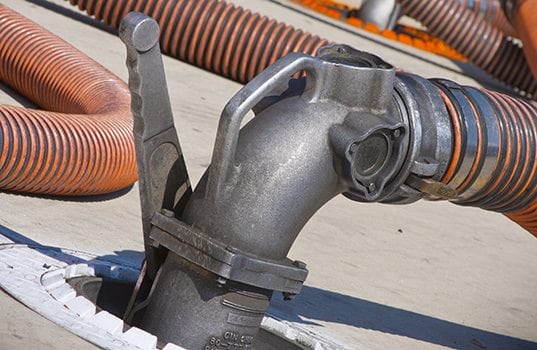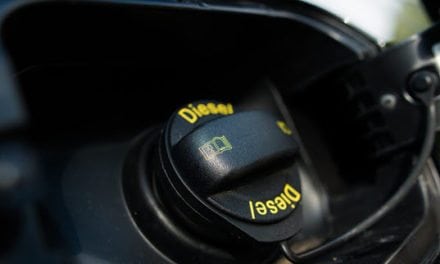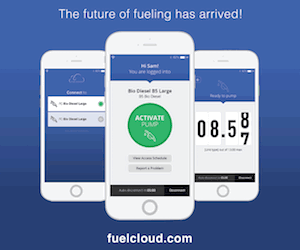By Katherine Vanover
The microbes that infiltrate and degrade fuel supplies are typically either bacteria or fungus. Numerous species of bacteria have been found to degrade fuel, including Pseudomonas aeruginosa and Acetobacter aceti. Fungus can also degrade fuel, like Hormoconis resinae, which has long been known to be a problem in aviation fuel and kerosene. Whichever kind has contaminated the fuel, the result is the same—equipment damage and fuel degradation.
How did these organisms get in the fuel? Unfortunately, these organisms are ubiquitous, found in soil, water, even in crude oil. The bacteria and fungal spores were likely in the fuel to begin with, but lacked one key element for growth—water. They contentedly remain dormant until water is present.
Rain water can easily enter a tank through neglected tank accesses, whether it’s a loose fill cap or an improperly seated automatic tank gauge (ATG). Condensation from water vapor in the air can also accumulate inside the tank, resulting in a thin film of water. This water may not be enough to signal a problem through the monitoring system, but it may be enough to allow microbial growth. One of the waste products, or metabolites, of these organisms is water. This means that once there is enough water to support life, more water will be produced, allowing for more growth, which produces more water, and so on.
At the interface between the water layer (bottom) and the fuel layer (top), fuel-degrading microorganisms find all the necessary ingredients that allow them to flourish, forming what is called a biofilm. The first step in biofilm formation is the production of molecules known as lipopolysaccharide surfactants, which reduce the surface tension of the water and create a solid, gelatinous substrate for further bacterial and fungal growth.
Once one organism has taken hold and has begun to grow, other fuel-degrading organisms find a more favorable environment and also begin growing in the biofilm. This is known as a consortium of microorganisms. This consortium creates a microenvironment beneficial to the bacteria and fungus, reliant on a food chain with fuel as the main nutrient source.
The domino effect of microbial growth often goes unnoticed until problems inside the tank become problems outside the tank. The first sign is often plugged filters and reduced filter life. Although the biofilm is at the water/fuel interface and might not be pulled into dispensing lines by the pump, the sludge that accumulates at the bottom of a tank can be.
This sludge is dead microorganisms and waste that falls to the bottom of the tank. The biofilm can easily clog lines if it gets pulled into fuel dispensing lines.
Not only do these organisms degrade fuel by metabolizing it for energy, they also utilize nutrients in fuel additives, effectively neutralizing them. The metabolites, or waste products, of these organisms, like organic acids, are detrimental to the fuel supply, the tank and the ancillary equipment, as well as all gaskets, seals, o-rings and hoses.
Microbially-induced corrosion (MIC) has been shown to eat through metal at a rate of 1 mm per year, rusting steel tanks and equipment. Fiberglass tanks aren’t safe either. Some fungus and bacteria have the ability to break down the resin that holds fiberglass together, resulting in a loss of integrity of the tank wall and increasing the chances of crack and leaks.
When filters are clogging, flow is slow and particulate is visible, you may have a problem with microorganism contamination. If you do, the judicious use of biocide is a must. Once the tank has been treated, it needs to be thoroughly cleaned. The particulate left behind when all the organisms in the biofilm are killed needs to be removed, fuel needs to be filtered and lines need to be flushed.
What can be done about this? The first line of defense is good housekeeping practices. A tight tank is a must. If water can’t get in, bacteria and fungus can’t grow. The tank environment must be monitored. When an ATG indicates water, it needs to be taken seriously. Tank accesses need to be kept dry—water in a well will become water in a tank if given enough time.
In short, these organisms are already in your fuel supply, waiting for enough water to accumulate so they can start growing, multiplying and degrading your gasoline, your kerosene, your reputation. Keep water out of your tank, keep your fuel supply safe.
 Katherine Vanover is the Director of Marketing for Clean Fuels National, an industry leader in fuel quality maintenance, providing fuel filtration and tank cleaning to major fuel retailers and fleets nationwide. Clean Fuels National is family owned and operated, working coast to coast every day, offering emergency cleaning as well as preventative maintenance programs. Contact 260-273-7032 or [email protected], or visit www.cleanfuelsnational.com.
Katherine Vanover is the Director of Marketing for Clean Fuels National, an industry leader in fuel quality maintenance, providing fuel filtration and tank cleaning to major fuel retailers and fleets nationwide. Clean Fuels National is family owned and operated, working coast to coast every day, offering emergency cleaning as well as preventative maintenance programs. Contact 260-273-7032 or [email protected], or visit www.cleanfuelsnational.com.









